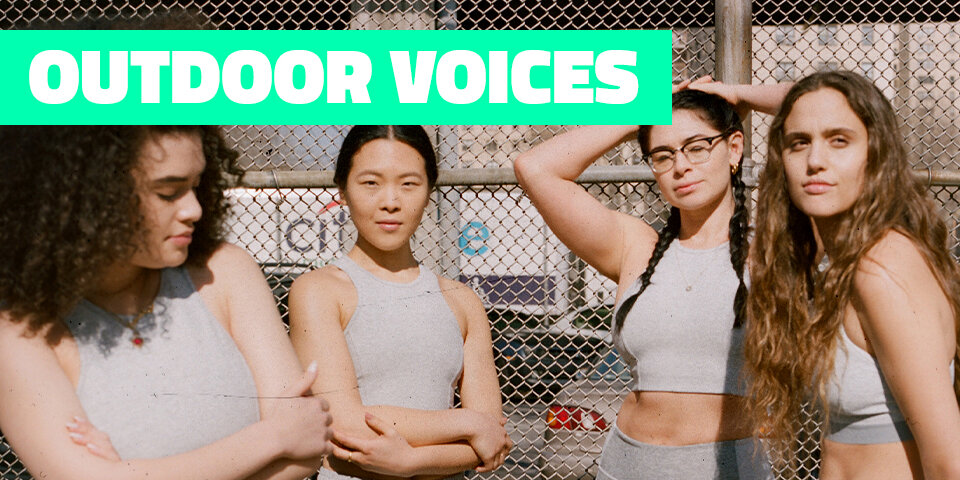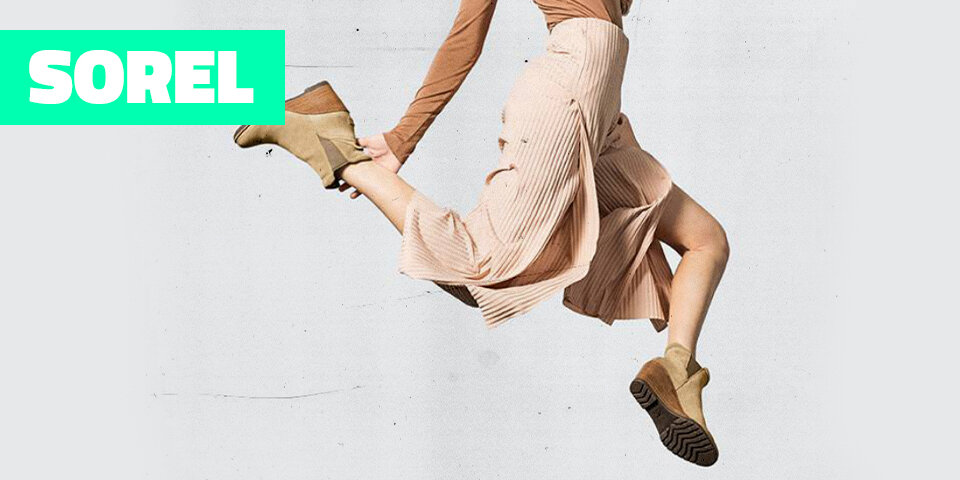5 REASONS TO DO IT FOR THE LADIES
Outdoor women are the better half of your audience.
Amidst an $887 billion outdoor industry, over half of outdoor participants are women. And yet most outdoor brands target men. On average, the industry is only spending 30% on their female consumers. The math doesn't add up, especially when you consider that women are often shopping for more than just themselves. But as persuasive as this data is, the reasons to invest in your female category go beyond simple math.
#1 ALL EYES ARE ON YOU
The time is now. All eyes are on brands for equal representation.
Along with sustainability, inclusion was the most talked about topic at Outdoor Retailer tradeshows throughout 2018 and 2019. And conversations about equality are being had across so many industries right now. From a company culture perspective, groundbreaking women’s empowerment movements like Time's Up and Me Too have put brands on stage in an important way. From a sales and marketing perspective, companies who don’t operate inclusively risk being left behind—or worse—getting called out.
#2 YOUNG WOMEN ARE OUT-ADVENTURING MEN
58% of outdoor participants are women (ages 18-24) VS 42% men.
Over half of outdoor participants between the ages of 18 and 24 are female. That means many opportunities: to build unique products for them, to create communities that connect them, to tell meaningful stories that inspire them.
Women are out there crushing crags and ripping dirt in awesome and inspiring ways. They’re creating their own movements—like WTF Bikexplorers, which champions gender inclusivity and racial equality within the bicycle adventure community. And women are documenting their own adventures—like The Skate Witches, a creative crew of skateboarders who make zines, films, art and merch. And with the inclusion of surfing and skating in the Summer Olympics (now postponed to 2021), the prospects for young female athletes across the world is getting wider and higher profile every single day.
#3 WOMEN MAKE 500% MORE PURCHASES THAN MEN
85% of total consumer purchases in the U.S. are by women VS 15% men.
The stats are in. Women have the buying power. Not only are they shopping for themselves—they’re often the primary shopper for their families. Outdoor brands would do well to audit how much they allocate toward the women’s side of their business. If the answer isn’t somewhere around 58% (see Reason 2—that’s how many female participants there are in the outdoor industry), then there are opportunities to unlock.
#4 MOST WOMEN SAY MARKETERS DON’T GET THEM
91% of women feel that advertisers do not understand them. They have needs that aren’t being met, and you can turn that into opportunity.
Important questions to ask yourself: Is your brand developing product specifically for women (using input from female athletes)? Are you employing female designers, creatives and leaders? Are you including female audiences in your research? And does your communication strategy include them? Are you featuring a diverse range of women’s stories in your advertising content? Are you giving these women agency, rather than objectifying them (like the above Billabong homepage from 2018)? Are you hiring female photographers or filmers? You get the idea. Real recognizes real.
#5 BRANDS THAT GET IT ARE DOMINATING
REI spent 2017 focusing solely on their female consumer with the Force Of Nature initiative.
For an entire year, every ad in every magazine and every social post featured and focused on females. The brand realized the scale was so tilted away from women consumers that it was necessary to swing full force in the female direction. Moving forward, REI is committed to a new normal of 50/50 male/female focus in all marketing.
RESULTS:
WOMEN’S SALES INCREASED 20%
470M EARNED MEDIA IMPRESSIONS
CONSUMER FEEDBACK SPARKED A NEW OPPORTUNITY TO OFFER EXTENDED SIZING
This female-founded brand tapped the athliesure trend and brought a realistic representation of women that resonated.
When Tyler Haney founded Outdoor Voices in 2014, the millennial-friendly brand earned praise for its authentic portrayal of diverse, everyday women. Success attracted big money and a big executive team—which created tension during growth. After some speed wobbles, the company recently restructured with a new female leadership team. Things are starting to rebound with a renewed focus on female empowerment, diversity and inclusion.
RESULTS:
467K INSTAGRAM FOLLOWERS (AS OF AUGUST 2020)
RANKED 8TH FASTEST GROWING ACTIVEWEAR BRAND OF 2020
Sorel went from arctic footwear to Vogue Magazine. They recognized the trend of blending function and fashion and knew the female market was a huge opportunity.
With the insight that women buy more shoes more often—especially when they’re considered fashionable purchases—Sorel identified an opportunity to expand their consumer base. The brand successfully increased its appeal in the fashion-focused market without losing its solid foothold in outdoors, and it has been paid off with continued growth ever since.
RESULTS:
2009 SALES = $60M
2018 SALES = $260.3M
NOW 70% FEMALE CONSUMER
Patagonia has always represented females as equals in every landscape.
This brand has the values-led marketing and company culture thing nailed, and they continue to be rewarded for it by their consumers. Along with representing women as equals in advertising, CEO Rose Marcario (2014-2020) implemented inclusive company policies like on-site childcare.
RESULTS:
REVENUE AND PROFITS QUADRUPLED SINCE 2014
ON-SITE CHILDCARE HAS RETAINED 100% OF WORKING MOMS, AND RAISED CHILDREN THAT ARE NOW LEADERS AT THE COMPANY
THE TAKEAWAY
Real investment in your female consumer isn’t just about adding a woman (or two) or adding a colorway. It’s about including women across strategic planning, product design and storytelling. And beyond being good business, it’s the right thing to do. An active lifestyle is for everyone, and we must model that now so that future generations of girls can continue to crush it.
__
Written by Jessica Vollendorf, Former Creative Director at Nemo Design
If you like this article, share:








